
Constantine: The City of Bridges and History
Explore Constantine, Algeria's City of Bridges, where ancient history meets stunning landscapes, and vibrant markets flourish alongside panoramic views and rich culture.
Welcome to Constantine, a city perched high on the cliffs of Algeria. Known as the 'City of Bridges,' Constantine offers a stunning blend of ancient history and breathtaking landscapes. The city is one of the oldest in the world, with roots tracing back over 2,000 years. The unique geography of Constantine, with its dramatic gorges and deep ravines, makes it a spectacular destination for both history buffs and nature lovers. As you wander through the city, you will encounter a rich tapestry of Roman, Byzantine, and Ottoman influences. The ancient ruins of Tiddis and the majestic Palace of Ahmed Bey are must-visit landmarks that tell the story of Constantine's illustrious past. The city's museums, such as the National Museum of Cirta, house incredible artifacts that provide insight into this ancient city's culture and history. But Constantine is not just about history. The city’s modern side is equally captivating. The bustling Kasbah district offers vibrant markets where you can buy traditional crafts, local spices, and delicious Algerian sweets. You can also enjoy the panoramic views from one of the many suspension bridges, such as the Sidi M'Cid Bridge, which connects different parts of the city over the ravine. Restaurants and cafes serve a variety of Algerian and Mediterranean cuisine, making it a gastronomic delight for food lovers.
Local tips in Constantine
- Wear comfortable shoes as the city’s terrain is hilly and involves a lot of walking.
- Visit in spring or autumn for the most pleasant weather.
- Try the local specialty dish, 'Chakhchoukha,' a traditional Algerian meal.
- Use local taxis or hire a guide to navigate the city's narrow and winding streets.
- Carry some cash as not all places accept credit cards.
Neighbourhoods in Constantine
Constantine: The City of Bridges and History
Welcome to Constantine, a city perched high on the cliffs of Algeria. Known as the 'City of Bridges,' Constantine offers a stunning blend of ancient history and breathtaking landscapes. The city is one of the oldest in the world, with roots tracing back over 2,000 years. The unique geography of Constantine, with its dramatic gorges and deep ravines, makes it a spectacular destination for both history buffs and nature lovers. As you wander through the city, you will encounter a rich tapestry of Roman, Byzantine, and Ottoman influences. The ancient ruins of Tiddis and the majestic Palace of Ahmed Bey are must-visit landmarks that tell the story of Constantine's illustrious past. The city's museums, such as the National Museum of Cirta, house incredible artifacts that provide insight into this ancient city's culture and history. But Constantine is not just about history. The city’s modern side is equally captivating. The bustling Kasbah district offers vibrant markets where you can buy traditional crafts, local spices, and delicious Algerian sweets. You can also enjoy the panoramic views from one of the many suspension bridges, such as the Sidi M'Cid Bridge, which connects different parts of the city over the ravine. Restaurants and cafes serve a variety of Algerian and Mediterranean cuisine, making it a gastronomic delight for food lovers.
When is the best time to go to Constantine?
Iconic landmarks you can’t miss
Amir Abdel Kader Mosque
Discover the architectural beauty and spiritual significance of Amir Abdel Kader Mosque, a must-visit cultural landmark in Constantine, Algeria.

Sidi M'Cid Bridge
Explore the stunning Sidi M'Cid Bridge in Constantine, a breathtaking marvel that connects history and nature in Algeria's picturesque landscapes.

Monument aux Morts
Explore the Monument aux Morts in Constantine, a stunning tribute to valor and sacrifice, surrounded by beautiful gardens and rich history.

French Cultural Centre of Constantine CCF
Discover the vibrant blend of French and Algerian culture at the French Cultural Centre in Constantine, a must-visit for art and history lovers.

Salah Bey Viaduct
Experience the breathtaking views and architectural brilliance of the Salah Bey Viaduct, a must-see landmark in Constantine, Algeria.
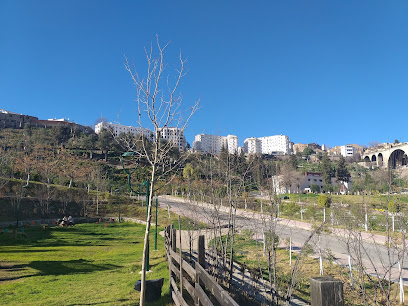
Zénith de Constantine
Discover the vibrant cultural scene at Zénith de Constantine, a premier performing arts theater showcasing diverse performances in a stunning setting.

Cirta Museum
Explore the fascinating history of Algeria at the Cirta Museum, a must-visit archaeological museum in Constantine filled with ancient treasures and engaging exhibits.

Bab El Kantra Bridge
Discover the breathtaking beauty of Bab El Kantra Bridge, a stunning architectural marvel in the heart of Constantine, Algeria, surrounded by rich history.

Palais du Bey
Explore the splendid Palais du Bey, a historical landmark in Constantine, showcasing Ottoman architecture and the rich history of Algeria.

Mellah Slimane Bridge
Explore the captivating Mellah Slimane Bridge in Constantine, a stunning feat of engineering with breathtaking views and rich cultural heritage.
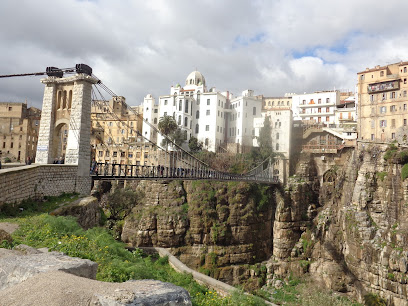
Massinissa Mausoleum
Discover the Massinissa Mausoleum, an archaeological gem in El Khroub, where ancient history meets breathtaking landscapes and cultural heritage.

El Kantara Garden
Experience tranquility and beauty at El Kantara Garden, a lush park in the heart of Constantine, perfect for relaxation and exploration.

Sidi Rached Bridge
Explore the stunning Sidi Rached Bridge in Constantine, Algeria - a marvel of engineering and breathtaking views that connect history with nature.

Grande Mosquée de Constantine
Explore the Grande Mosquée de Constantine, a stunning Islamic architectural masterpiece that embodies the rich heritage and culture of Algeria.
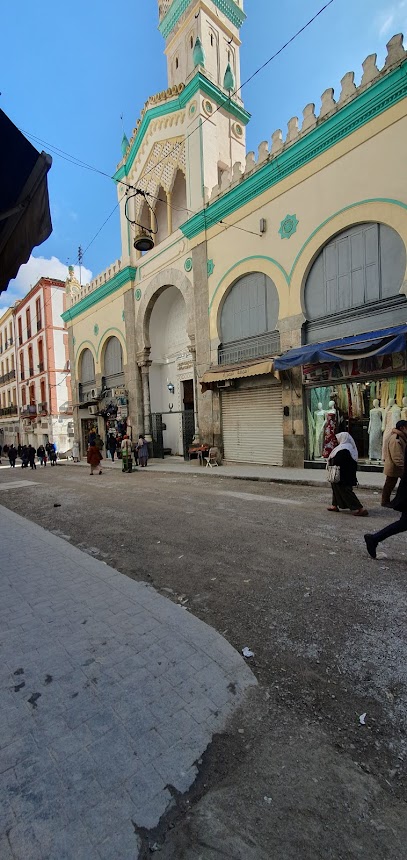
Tiddis Ruins
Discover the Tiddis Ruins, a captivating historical landmark in Algeria where ancient Roman culture meets breathtaking landscapes.

Unmissable attractions to see
Amir Abdel Kader Mosque
Experience the serene beauty and historical significance of Amir Abdel Kader Mosque in Hamma Bouziane, a must-visit destination for every traveler in Algeria.

Sidi M'Cid Bridge
Experience the breathtaking beauty and historical significance of Sidi M'Cid Bridge, a must-visit landmark in Constantine, Algeria.
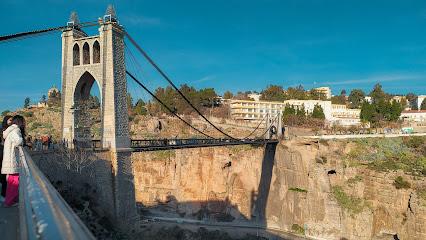
Salah Bey Bridge
Explore the stunning Salah Bey Bridge in Constantine, a breathtaking blend of history, architecture, and scenic views that captures the essence of Algeria.

Cirta Museum
Explore the Cirta Museum in Constantine, where Algeria's rich archaeological history comes alive through captivating exhibits and ancient artifacts.

Amira Land
Discover the ultimate water adventure at Amira Land, El Khroub's premier water park, perfect for families and thrill-seekers alike.
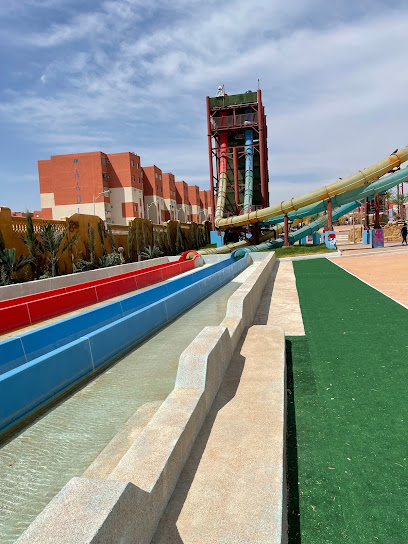
Massinissa Mausoleum
Explore the Massinissa Mausoleum, a magnificent archaeological site reflecting Algeria's rich heritage and the legacy of the ancient Numidian king.

Snober Land
Experience the excitement of Snober Land in El Khroub, a thrilling amusement park offering rides, games, and entertainment for all ages.

Djebel El Wahch Forest
Explore the breathtaking Djebel El Wahch Forest, a serene national forest in Algeria, perfect for nature lovers seeking tranquility and adventure.

Amusement park pine
Experience the magic of Amusement Park Pine in El Khroub, a charming amusement garden filled with thrilling rides and lush landscapes.

El Kantara Garden
Explore the tranquil beauty of El Kantara Garden in Constantine, a perfect retreat for nature lovers and families seeking relaxation.

Sidi Rached Bridge
Discover the Sidi Rached Bridge in Constantine, a breathtaking architectural marvel offering stunning views and rich history in Algeria.

Grande Mosquée de Constantine
Experience the architectural splendor and spiritual tranquility of the Grande Mosquée de Constantine, a gem of Islamic heritage in Algeria.

Aqueduc romain
Explore the Roman Aqueduct in Constantine, an iconic archaeological site showcasing ancient engineering marvels amidst stunning landscapes.

The Falls Bridge
Discover the breathtaking Falls Bridge in Constantine, a stunning architectural masterpiece offering panoramic views and rich historical significance.
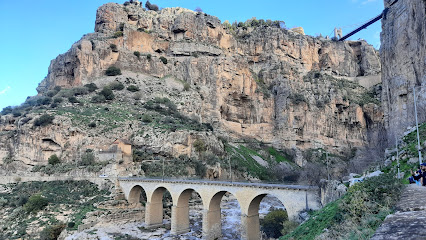
Bardo Park
Discover the tranquil beauty of Bardo Park in Constantine, an oasis of greenery perfect for relaxation, family fun, and cultural experiences.

Essential places to dine
Igherssan Restaurant
Experience authentic Algerian cuisine at Igherssan Restaurant in Constantine, where every dish tells a story of rich cultural heritage.

Magic House
Discover the enchanting flavors of Algeria at Magic House in Constantine – where tradition meets modern culinary artistry.

Restaurant Delices
Discover authentic Algerian cuisine at Restaurant Delices in El Khroub – where every meal tells a story.

Pizzeria Dar Diaf
Discover authentic Italian flavors at Pizzeria Dar Diaf in Constantine - where every slice tells a delicious story.

APEX Restaurant et Café
Discover the flavors of Algeria at APEX Restaurant et Café, where local ingredients meet global culinary traditions in an inviting atmosphere.

Restaurant Les Palmiers
Experience the finest dining at Restaurant Les Palmiers in El Khroub – where local flavors meet international cuisine in an elegant setting.

Plane Trees Restaurant
Discover the authentic taste of Algeria at Plane Trees Restaurant in Constantine – where tradition meets flavor in every dish.

سينية الباي Siniet El Bey
Experience authentic Algerian cuisine at Siniet El Bey in Constantine - where flavor meets tradition in a vibrant atmosphere.

Piano Piano Food
Discover the rich flavors of Constantine at Piano Piano Food, where authentic cuisine meets inviting ambiance for an unforgettable dining experience.

TakeOff Lounge
Experience exquisite Algerian cuisine at TakeOff Lounge in Constantine – where tradition meets modern dining.

Restaurant La Concorde
Experience authentic Algerian flavors at Restaurant La Concorde in Constantine – where tradition meets culinary excellence.

L’Asiatico
Experience authentic Thai flavors at L’Asiatico in Constantine—where every dish is a delightful journey through Thailand's rich culinary heritage.

Restaurant RAIS
Experience authentic Algerian cuisine at Restaurant RAIS in Constantine – where tradition meets taste in every bite.

Restaurant Touareg
Experience authentic North African cuisine at Restaurant Touareg in Constantine – where flavors come alive in a charming setting.

Green Lounge
Experience delicious fast food at Green Lounge in Constantine - where tasty meets convenience in a lively atmosphere.

Markets, malls and hidden boutiques
Centre commercial boughaba
Experience the best of shopping and dining at Centre Commercial Boughaba, a vibrant mall in the heart of Constantine, Algeria.

Epic Store
Explore the vibrant fashion scene at Epic Store, a premier clothing destination in Constantine, offering local and contemporary styles for every taste.

GALAXY SHOP
Explore the vibrant Galaxy Shop in Constantine, a shopping haven offering local and international brands, delightful eateries, and a rich cultural experience.

Boutique Wejdane
Discover unique clothing styles at Boutique Wejdane in Constantine, where local craftsmanship meets contemporary fashion.

fancy accessoires
Explore Fancy Accessories in Constantine for unique gifts and local craftsmanship that capture the spirit of Algeria.

Paradis shopping centre ville
Experience the vibrant shopping scene at Paradis Shopping Centre in Constantine, where local culture meets modern retail.

PALMA MARKET
Discover local flavors and essentials at Palma Market, a vibrant convenience store in the heart of Constantine, Algeria.

Youshop Constantine
Explore unique fashion finds at Youshop Constantine, where local style meets modern trends in a vibrant shopping experience.

Gift Art
Explore the vibrant artistry of Constantine at Gift Art, your go-to destination for unique souvenirs and local handicrafts.

moon deco
Explore Moon Deco, the ultimate gift shop in Constantine, where unique local crafts and souvenirs come together to celebrate the region's rich culture.

Bazar com
Experience the vibrant culture of Constantine at Bazar com, your go-to store for local handicrafts and authentic Algerian delicacies.

Suzzi_fashion
Discover unique gifts and local craftsmanship at Suzzi Fashion, a must-visit gift shop in the heart of Constantine, Algeria.

Boutique
Explore stylish footwear at the Boutique Shoe Store in Constantine, where fashion meets local charm and unique designs await.

Boutique Number One
Explore Boutique Number One in Constantine for a unique selection of stylish footwear that enhances your fashion statement.
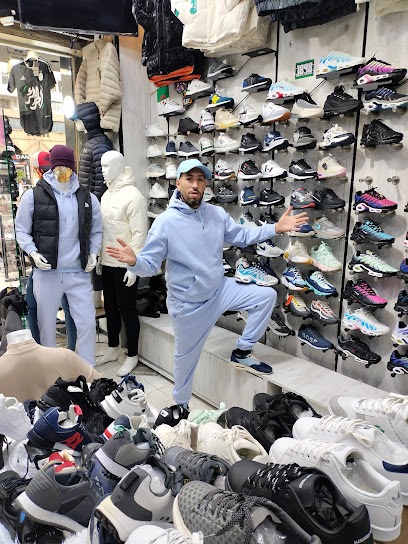
K.M.S Zizou
Explore the charm of K.M.S Zizou Gift Shop in Constantine, where unique souvenirs and local crafts await every tourist.

Essential bars & hidden hideouts
Igherssan Restaurant
Experience the best of Algerian flavors at Igherssan Restaurant in Constantine, renowned for its pizzas and vibrant dining atmosphere.

Magic House
Discover the essence of Algerian culinary artistry at Magic House in Constantine, where every dish tells a story.

APEX Restaurant et Café
Experience the rich flavors of Algeria at APEX Restaurant et Café, where every meal is a culinary journey in a cozy, inviting atmosphere.

Restaurant Les Palmiers
Discover the culinary elegance of Restaurant Les Palmiers in El Khroub, where gourmet dining meets exceptional service in a charming setting.

Plane Trees Restaurant
Discover the essence of Algerian cuisine at Plane Trees Restaurant in Constantine, where tradition meets flavor in a delightful dining experience.

سينية الباي Siniet El Bey
Experience the authentic flavors of Algeria at سينية الباي Siniet El Bey, where culinary tradition meets warm hospitality in the heart of Constantine.
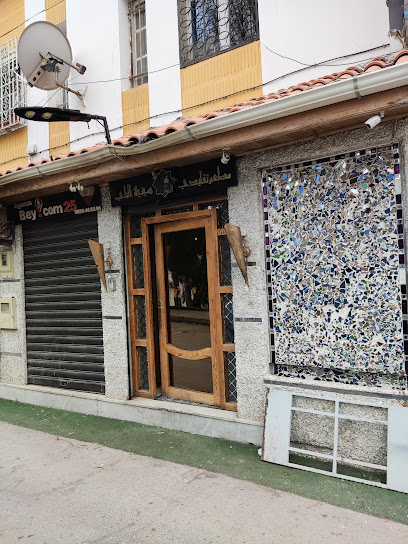
TakeOff Lounge
Experience the flavors of Algeria and beyond at TakeOff Lounge in Constantine, where every meal is a celebration of culinary artistry.

Piano Piano Food
Experience the vibrant flavors of Constantine at Piano Piano Food, where traditional recipes meet modern dining in a cozy atmosphere.

Restaurant Touareg
Experience the authentic flavors of Algeria at Restaurant Touareg, a must-visit dining destination in Constantine offering traditional cuisine in a warm setting.

Green Lounge
Indulge in a fusion of local and international fast-food delights at Green Lounge, the perfect pit-stop in Constantine.

Pattaya lounge
Discover the vibrant flavors of fast food at Pattaya Lounge, a cozy café in Constantine, perfect for tourists seeking quick and delicious meals.

Seven Eleven
Savor authentic Italian pizza and relax in the cozy atmosphere of Seven Eleven Lounge, a must-visit for visitors in Constantine.

Aiche House
Discover Aiche House, a delightful grill restaurant in Hamma Bouziane, offering authentic flavors and a warm, inviting atmosphere for tourists.

زكرياء الكهرمنزلية
Discover the energetic ambiance of زكرياء الكهرمنزلية, a bar in Hamma Bouziane that offers a taste of local nightlife and culture.

PLAY STATON IMAD
Experience the vibrant local nightlife at Play Station Imad, a lively bar in Constantine where culture and entertainment meet.

Local Phrases
-
- Helloمرحبا
[marhaban] - Goodbyeوداعا
[wadaan] - Yesنعم
[naam] - Noلا
[laa] - Please/You're welcomeمن فضلك
[min fadlak] - Thank youشكرا
[shukran] - Excuse me/Sorryعذرا
[aadhraan] - How are you?كيف حالك؟
[kayf halak?] - Fine. And you?بخير. وأنت؟
[bikhayr. wa'ant?] - Do you speak English?هل تتكلم الإنجليزية؟
[hal tatakallam al'injlizia?] - I don't understandأنا لا أفهم
[ana la afham]
- Helloمرحبا
-
- I'd like to see the menu, pleaseأود أن أرى القائمة، من فضلك
[awad 'an 'ara alqaima, min fadlak] - I don't eat meatأنا لا آكل اللحم
[ana la aakul allahm] - Cheers!في صحتك!
[fi sahtak!] - I would like to pay, pleaseأريد أن أدفع، من فضلك
[uriid 'an 'udfi', min fadlak]
- I'd like to see the menu, pleaseأود أن أرى القائمة، من فضلك
-
- Help!النجدة!
[alnajda!] - Go away!انصرف!
[ansarif!] - Call the Police!اتصل بالشرطة!
[iatisil bialshurta!] - Call a doctor!اتصل بالطبيب!
[iatisil biltaibib!] - I'm lostلقد ضللت الطريق
[laqad dillat altariq] - I'm illأنا مريض
[ana mareed]
- Help!النجدة!
-
- I'd like to buy...أريد أن أشتري...
[uriid 'an 'ashtari...] - I'm just lookingأنا فقط أتطلع
[ana faqat atatala] - How much is it?كم هو ثمنه؟
[kam huwa thamanuh?] - That's too expensiveهذا غالي جدا
[hadha ghali jiddan] - Can you lower the price?هل يمكنك خفض السعر؟
[hal yumkinuk khafr alsiar?]
- I'd like to buy...أريد أن أشتري...
-
- What time is it?كم الساعة؟
[kam alssaeat?] - It's one o'clockالساعة الواحدة
[alssaeat alwahidat] - Half past (10)الساعة والنصف
[alssaeat walnisf] - Morningالصباح
[assabah] - Afternoonالبعد من الظهر
[albaud min azzuhr] - Eveningالمساء
[almasa] - Yesterdayالبارحة
[albaaraha] - Todayاليوم
[alyaum] - Tomorrowغدا
[ghadan] - 1واحد
[wahid] - 2اثنان
[ithnan] - 3ثلاثة
[thalatha] - 4أربعة
[arbaa] - 5خمسة
[khamsa] - 6ستة
[sitta] - 7سبعة
[sabaa] - 8ثمانية
[thamania] - 9تسعة
[tasia] - 10عشرة
[ashara]
- What time is it?كم الساعة؟
-
- Where's a/the...?أين هو/هي...؟
[ayn huwa/hia...?] - What's the address?ما هو العنوان؟
[ma huwa al'unnwan?] - Can you show me (on the map)?هل يمكنك أن تريني (على الخريطة)؟
[hal yumkinuk 'an tarini (ealaa alkhariata)?] - When's the next (bus)?متى يأتي الحافلة التالية؟
[mata yati alhafilat altaliat?] - A ticket (to ....)تذكرة (إلى ....)
[tadhkirat ('iilaa ....)]
- Where's a/the...?أين هو/هي...؟
History of Constantine
-
Constantine, known historically as Cirta, was founded by the Phoenicians and later became the capital of Numidia under the reign of King Syphax in the 3rd century BCE. Its strategic location on a rocky plateau made it a significant military and trade center. The city was later annexed by the Romans in the 2nd century BCE, transforming it into a prosperous metropolis.
-
During Roman rule, Cirta flourished, becoming a key city in the province of Africa. The Romans built impressive structures, including aqueducts, baths, and amphitheaters, many of which still stand today. The city's urban layout was characterized by wide streets and grand public buildings, reflecting the architectural prowess of the Roman Empire.
-
After the fall of the Western Roman Empire, Cirta came under the control of the Byzantines in the 6th century CE. The city was renamed Constantine in honor of Emperor Constantine the Great. The Byzantines fortified the city with walls and defensive structures to protect it from invading forces, including the Vandals and later the Arab conquerors.
-
In the 7th century CE, Constantine was conquered by the Umayyad Caliphate, marking the beginning of Islamic influence in the region. The city became an important cultural and educational center in the Islamic world. Many mosques and madrasas were built, and the city thrived under the rule of various Islamic dynasties, including the Fatimids and the Zirids.
-
In the 16th century, Constantine became part of the Ottoman Empire. The city served as a significant administrative and military hub for the Ottomans in North Africa. The Ottoman influence is evident in the city's architecture, with the construction of palaces, mosques, and fortifications. The local economy prospered through trade and agriculture during this period.
-
In 1837, Constantine fell to French forces after a brutal siege. The city underwent significant changes under French colonial rule, with the construction of new infrastructure, including roads, railways, and public buildings. The French influence is still visible in the city's architecture and urban planning. However, colonial rule also brought about resistance and uprisings from the local population.
-
Constantine played a crucial role during the Algerian War of Independence (1954-1962). The city was a center of nationalist activity and witnessed numerous clashes between French forces and Algerian freedom fighters. The war culminated in Algeria gaining independence in 1962, marking a new chapter in Constantine's history.
-
Today, Constantine is a vibrant city that harmoniously blends its rich historical heritage with modern development. Known as the 'City of Bridges' due to its stunning suspension bridges spanning deep gorges, Constantine remains a testament to its resilient past. The city continues to be a cultural and educational center, with numerous festivals, museums, and universities celebrating its diverse history.
Constantine Essentials
-
Constantine, known as the 'City of Bridges,' is located in northeastern Algeria. The nearest international airport is Mohamed Boudiaf International Airport (CZL), approximately 10 kilometers from the city center. Direct flights to Constantine are available from major European cities and other Algerian cities. From the airport, you can take a taxi or use airport shuttle services to reach the city. Alternatively, Constantine is accessible by train from Algiers, Oran, and Annaba, as well as by intercity buses.
-
Constantine offers various transportation options for getting around the city. Taxis are widely available and can be flagged down on the street or booked via phone. Public buses and trams provide affordable transportation within the city and to nearby suburbs. For a more scenic and unique experience, use the city's cable cars that connect different parts of Constantine, offering stunning views of the Rhumel Gorge. Car rental services are also available for those who prefer to explore the region at their own pace.
-
The official currency in Algeria is the Algerian Dinar (DZD). Credit cards are accepted in most hotels, restaurants, and larger shops, but it is advisable to carry cash for smaller establishments and markets. ATMs are widely available throughout Constantine, where you can withdraw local currency using international bank cards. Make sure to notify your bank of your travel plans to avoid any issues with card usage.
-
Constantine is generally safe for tourists, but it is important to take standard precautions. Avoid walking alone at night in unfamiliar areas and keep an eye on your belongings in crowded places. The neighborhoods of Sidi Rached and Bardo have been reported to have higher crime rates, particularly petty theft targeting tourists. Always stay vigilant and aware of your surroundings.
-
In case of emergency, dial 14 for police assistance, 15 for medical emergencies, and 17 for fire services. It is recommended to have travel insurance that covers medical emergencies. The main hospital in Constantine is the University Hospital Ben-Badis, which provides emergency medical services. Pharmacies are available throughout the city for minor health issues and over-the-counter medications.
-
Fashion: Do dress modestly, especially when visiting religious sites. Avoid wearing revealing clothing. Religion: Do respect local customs and traditions. Always cover your head when entering mosques. Public Transport: Do be respectful and give up your seat to elderly passengers. Don't eat or drink on public transport. Greetings: Do greet people with a handshake. A slight bow of the head is also a sign of respect. Eating & Drinking: Do try local delicacies and accept food offerings graciously. Don't refuse hospitality, as it is considered impolite.
-
To experience Constantine like a local, visit the local markets such as the Souk El Asser where you can buy fresh produce and traditional Algerian goods. Engage with locals, as they are often friendly and willing to share stories about the city's history and culture. Don't miss visiting the iconic bridges like the Sidi M'Cid Bridge and the El Kantara Bridge. For a unique experience, take a walk through the Casbah of Constantine, a maze of narrow streets and historic buildings offering a glimpse into the city's past.
Trending Landmark in Constantine
-
Amir Abdel Kader Mosque
-
Sidi M'Cid Bridge
-
Monument aux Morts
-
French Cultural Centre of Constantine CCF
-
Salah Bey Viaduct
-
Zénith de Constantine
-
Cirta Museum
-
Bab El Kantra Bridge
-
Palais du Bey
-
Mellah Slimane Bridge
-
Massinissa Mausoleum
-
El Kantara Garden
-
Sidi Rached Bridge
-
Grande Mosquée de Constantine
-
Tiddis Ruins
Nearby Cities to Constantine
-
Things To Do in Setif
-
Things To Do in Annaba
-
Things To Do in Bejaia
-
Things To Do in Tizi Ouzou
-
Things To Do in Tozeur
-
Things To Do in Bizerte
-
Things To Do in Tunis
-
Things To Do in Algiers
-
Things To Do in Hammamet
-
Things To Do in Sousse
-
Things To Do in Monastir
-
Things To Do in Sfax
-
Things To Do in Djerba
-
Things To Do in Palma de Mallorca
-
Things To Do in Palermo














